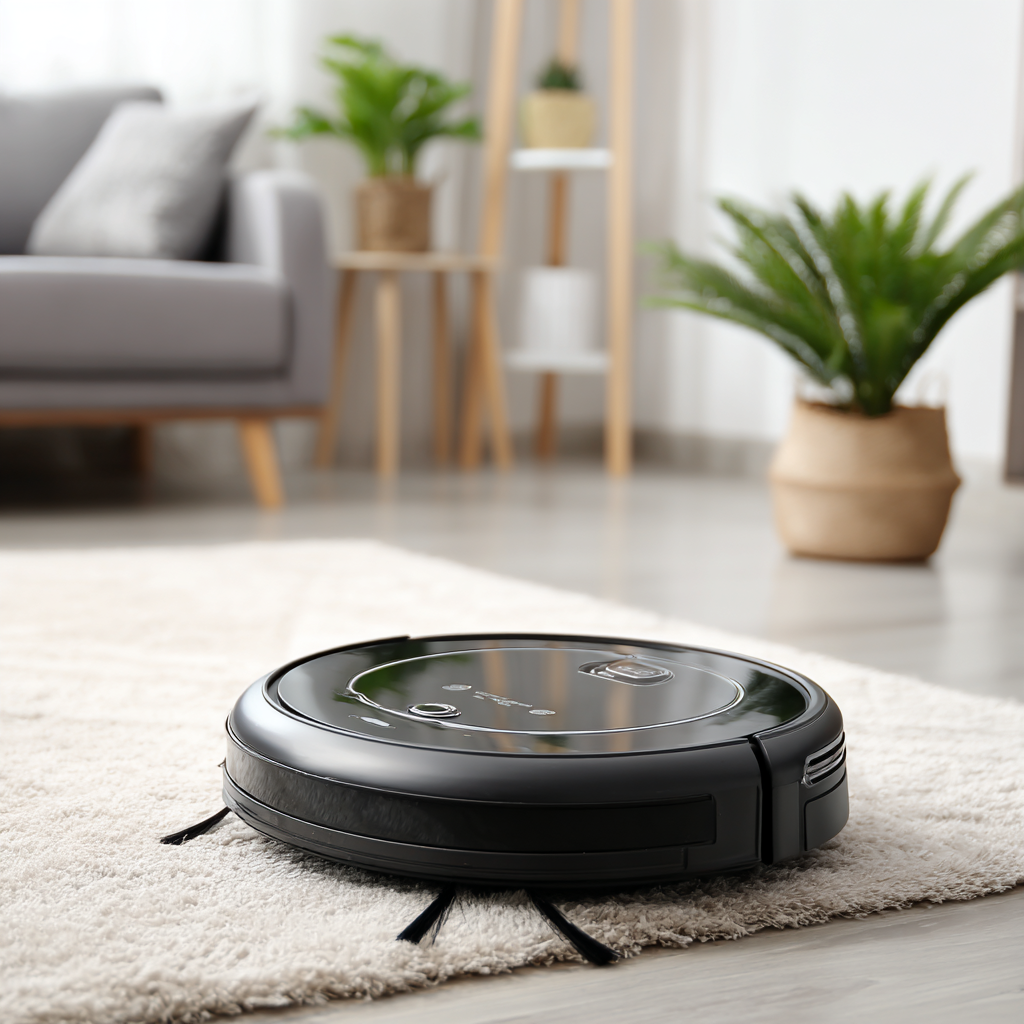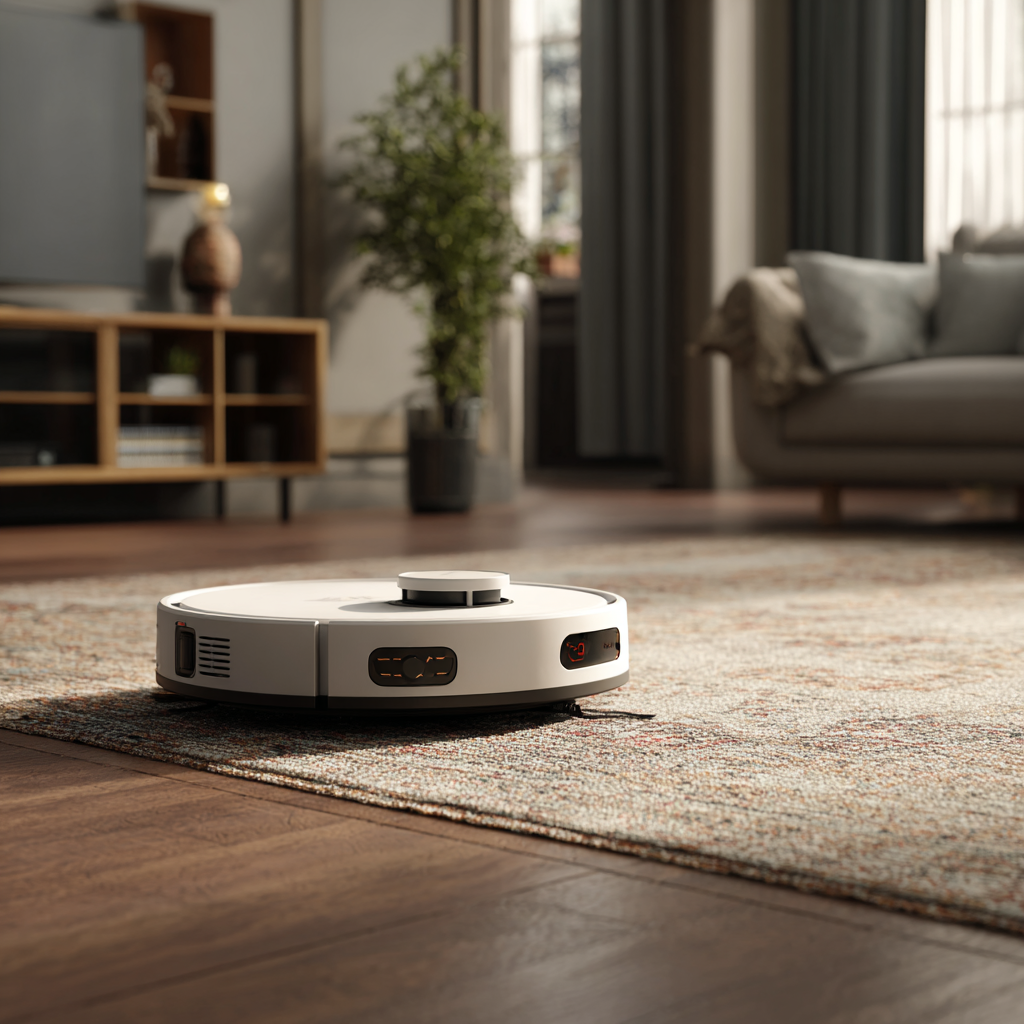The demand for Robot Vacuum Cleaners has surged in recent years, driven by advancements in technology and changing consumer lifestyles. According to a report by Grand View Research, the global robotic vacuum cleaner market is expected to reach USD 6.5 billion by 2025, growing at a compound annual growth rate (CAGR) of 21.4%. This rapid expansion highlights the fierce competition among manufacturers, especially with world-class factories in China leading the charge in high-quality production. As consumers increasingly prioritize convenience and efficiency in their cleaning tools, sourcing the best Robot Vacuum Cleaner has become a critical challenge for retailers and industry players alike. This blog will explore the top strategies for navigating the competitive landscape and securing superior robotic cleaning solutions that meet diverse customer needs.

The global demand for robot vacuum cleaners is surging, with the market expected to grow significantly between 2023 and 2030. In this timeframe, the vacuum cleaner market's size is projected to expand from $44.24 billion to $74.98 billion. This growth is fueled by innovations in technology, the increasing prevalence of smart home devices, and consumers' desire for convenience in home maintenance. As more brands enter the competitive arena, assessing the best options becomes crucial for consumers seeking value without compromising quality.
Tip 1: When evaluating robot vacuum cleaners, consider their navigation technology. Advanced systems that use smart mapping and obstacle detection can enhance cleaning efficiency and provide better coverage of your living space.

When searching for the best robot vacuum cleaner in today’s competitive market, it’s essential to understand the key factors influencing quality and performance in robotics. One major aspect is the suction power, which directly affects the vacuum's ability to pick up dirt, pet hair, and other debris. High-quality models often feature advanced motor technology that ensures stronger suction without increasing noise levels, a crucial consideration for maintaining a peaceful home environment.
Another factor to evaluate is navigation technology; robot vacuums equipped with smart sensors and mapping capabilities can efficiently cover more area while avoiding obstacles, ensuring a thorough clean.
Battery life and capacity are equally important when determining the overall effectiveness of a robot vacuum. A model that can operate for longer periods before needing a recharge is more likely to provide sustained cleaning performance, particularly in larger homes. Additionally, consider the ease of maintenance and the variety of cleaning modes available. High-performing robot vacuums often come with features such as self-cleaning brushes and customizable cleaning schedules, allowing users to adapt the machine to their specific needs.
By focusing on these key factors, consumers can make more informed decisions in sourcing the best robot vacuum cleaner for their homes.
In today’s competitive landscape for robot vacuum cleaners, effective market research and comprehensive competitor analysis are crucial. Recent insights from the “洞察即服务市场研究报告” highlight that the insights-as-a-service market is projected to grow significantly, driven by data analytics and market research services. Companies looking to enter the robot vacuum sector should leverage tools like consumer insights and competitive intelligence to understand evolving consumer preferences and market dynamics.
Moreover, as outlined in the 2032 customer experience services market report, businesses must utilize advanced analytical frameworks to map customer journeys and enhance feedback management. This focus not only helps in identifying product gaps but also in creating targeted marketing strategies to outpace competitors. By integrating a systematic approach to market research and utilizing data-driven insights, companies can craft innovative solutions that resonate with consumers, ensuring they stand out in a crowded market.
| Dimension | Data Point | Market Insight |
|---|---|---|
| Price Range | $200 - $800 | Pricing varies significantly based on features and brand reputation. |
| Key Features | Smart Mapping, Wi-Fi Connectivity, App Control | High demand for advanced tech features among consumers. |
| Consumer Ratings | 4.0 - 4.8 Stars | Most consumers prefer models with ratings above 4 stars. |
| Market Share | 30% Top Brands | Consolidated market with top brands holding significant share. |
| Sales Channels | Online Retail, Specialty Stores | Online sales growing rapidly, with strong competition in retail. |
When exploring the competitive landscape of robot vacuum cleaners, understanding the innovative features that distinguish leading brands is crucial. According to the International Data Corporation (IDC), the global market for robotic vacuum cleaners is projected to reach $5.6 billion by 2025, driven by advancements in technology and consumer demand for smart home devices. Leading brands like iRobot, Roborock, and Dyson are integrating cutting-edge functionalities such as advanced mapping and navigation systems, which not only enhance cleaning efficiency but also improve user experience.

One standout feature that sets top brands apart is the incorporation of artificial intelligence (AI) and machine learning. These technologies allow robot vacuums to learn and adapt to a home's layout, optimize cleaning paths, and even recognize different types of surfaces. A report by Technavio highlights that robot vacuum cleaners equipped with smart sensors and voice control capabilities are expected to capture a significant share of the market, as they provide a more personalized and user-friendly cleaning solution. Additionally, features like obstacle avoidance and self-emptying dustbins elevate the convenience quotient, making these devices more appealing to tech-savvy consumers inundated with choices. As a result, the competition continues to intensify, pushing brands to innovate further and capture the attention of potential buyers.
In the fast-evolving international robotics market, establishing a strong brand presence is paramount for companies seeking to stand out, especially in the competitive realm of robot vacuum cleaners. A robust brand identity begins with a clear understanding of the target demographic and market trends. By leveraging consumer insights, companies can tailor their marketing strategies to resonate with potential buyers, highlighting unique selling points that differentiate their products from competitors. This could involve focusing on specific features such as advanced navigation technology, superior battery life, or enhanced smart home integration.
Moreover, fostering customer loyalty plays a crucial role in building a strong brand presence. Engaging with customers through social media platforms, providing exceptional after-sales support, and encouraging user-generated content can help create a community around the brand. Collaborations with influencers and participation in trade shows can further amplify visibility and credibility in a crowded marketplace. Consistent messaging and visual branding across all channels will reinforce the company's identity, making it easier for consumers to recognize and trust the brand in their purchasing decisions.